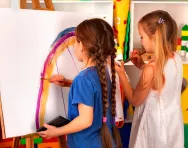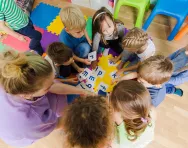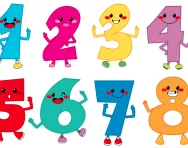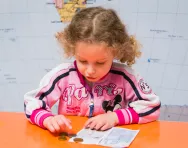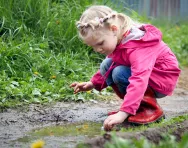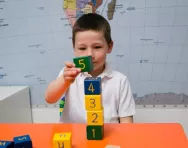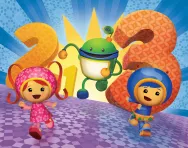Important update from TheSchoolRun
For the past 13 years, TheSchoolRun has been run by a small team of mums working from home, dedicated to providing quality educational resources to primary school parents. Unfortunately, rising supplier costs and falling revenue have made it impossible for us to continue operating, and we’ve had to make the difficult decision to close. The good news: We’ve arranged for another educational provider to take over many of our resources. These will be hosted on a new portal, where the content will be updated and expanded to support your child’s learning.
What this means for subscribers:
- Your subscription is still active, and for now, you can keep using the website as normal — just log in with your usual details to access all our articles and resources*.
- In a few months, all resources will move to the new portal. You’ll continue to have access there until your subscription ends. We’ll send you full details nearer the time.
- As a thank you for your support, we’ll also be sending you 16 primary school eBooks (worth £108.84) to download and keep.
A few changes to be aware of:
- The Learning Journey weekly email has ended, but your child’s plan will still be updated on your dashboard each Monday. Just log in to see the recommended worksheets.
- The 11+ weekly emails have now ended. We sent you all the remaining emails in the series at the end of March — please check your inbox (and spam folder) if you haven’t seen them. You can also follow the full programme here: 11+ Learning Journey.
If you have any questions, please contact us at [email protected]. Thank you for being part of our journey it’s been a privilege to support your family’s learning.
*If you need to reset your password, it will still work as usual. Please check your spam folder if the reset email doesn’t appear in your inbox.
What your child learns in Nursery maths
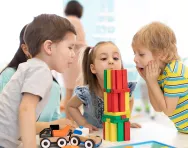
The idea of your child learning ‘mathematics’ at the age of just three or four may sound improbable, but in Nursery, they’ll start to acquire the very basics of numeracy which will then be built upon as they progress through primary school.
The Early Years Foundation Stage (EYFS) Framework (basically, the curriculum for pre-school, Nursery and Reception children) sets out ‘prime areas’ of learning, one of which is mathematics.
Within that, there are Early Learning Goals (ELGs), each with an ‘expected level of development.’
Knowing that your child should be at an ‘expected level’ by the end of Nursery may make you feel under pressure to make sure they meet their targets, but at this age, children’s development is highly variable – so try not to worry too much about levels and goals.
Often, discrepancies in learning and development in Nursery will iron themselves out in the years ahead.
Nevertheless, supporting your child with basic maths in everyday life will build their confidence and further their understanding.
‘Having a go’
One of the basic premises in Nursery maths is that children should feel confident to ‘have a go.’ It’s important that at this young age, children develop positive attitudes towards and interests in maths, talk about it, look for examples in day-to-day life, talk to other children and adults about what they notice, and are not afraid to make mistakes.
Whatever your own maths knowledge is like, this is something you can encourage at home, so keep the pressure off, praise your child for showing an interest and a willingness to experiment and ask questions, and be a good role model when talking about numbers, shapes, sizes and patterns.
Early Learning Goal: number and numerical patterns
Your child will be encouraged to:
- Be able to count confidently up to 10 and then 20.
- Subitise (that is, tell how many objects are in a group without counting) up to five – for example, be able to tell just by looking which group of counters or buttons contains two, and which contains four.
- Use objects like pebbles, counters or bricks as hands-on tools to support counting and understanding of number.
Try this:
- Sing counting songs and rhymes, like Five Little Monkeys Jumping on the Bed or Ten Green Bottles, encouraging your child to join in. Try to find songs that count forwards like One, Two, Three, Four, Five, Once I Caught a Fish Alive, and backwards, like Five Little Ducks went Swimming one Day.
- Encourage your child to spot how many objects are in a group without counting – dominoes and dice games are great for this.
- Give them opportunities to count in play, such as building towers and counting how many blocks they use, or playing Hide and Seek and counting to 10 (or 20, depending on their grasp of number).
- Look for ways to encourage them to count in everyday life, for example, ‘Can you lay the table for three people?’ or ‘Shall we see how far we can count before the traffic light goes green?’
Early Learning Goal: shape, space and measures
Your child will be encouraged to:
- Learn and name simple shapes like circle, square, rectangle and triangle.
- Understand concepts like more/less, more/fewer, bigger/smaller and taller/shorter.
- Look for patterns, both in adult-led exercises and free play – for example, a teacher might put out a selection of objects like buttons or counters and get your child to copy a pattern (red, yellow, red, yellow and so on); or your child might independently play with cars and put them in order from smallest to biggest.
- Look for connections – for instance, ‘There are four children on my table and I am four years old!’
Try this:
- Provide opportunities for your child to explore sizes and measures – water play is a good way to do this, as they can pour water into different containers and comment on which has more and which has less.
- Find ways for your child to explore shapes in play. This could be building with blocks of different shapes, using shape cutters for play dough, or drawing the outlines of shapes for them to copy or draw over.
- Let your child help with folding washing and putting it away, pairing socks by size or colour, or working out which family member an item belongs to based on its size.
- Encourage them to help in the kitchen – there are lots of ways to talk about shape and size, for example cutting soft fruit or veg into even-sized pieces with a blunt knife, pouring equal amounts of juice, or putting cutlery away based on its shape and size (teaspoons are smaller than dessertspoons, which are smaller than tablespoons, for example).
- Talk about the shapes and patterns you see in everyday life – ‘Look how the bricks in this wall go big, small, big, small,’ or ‘What shape are that house’s windows?’
